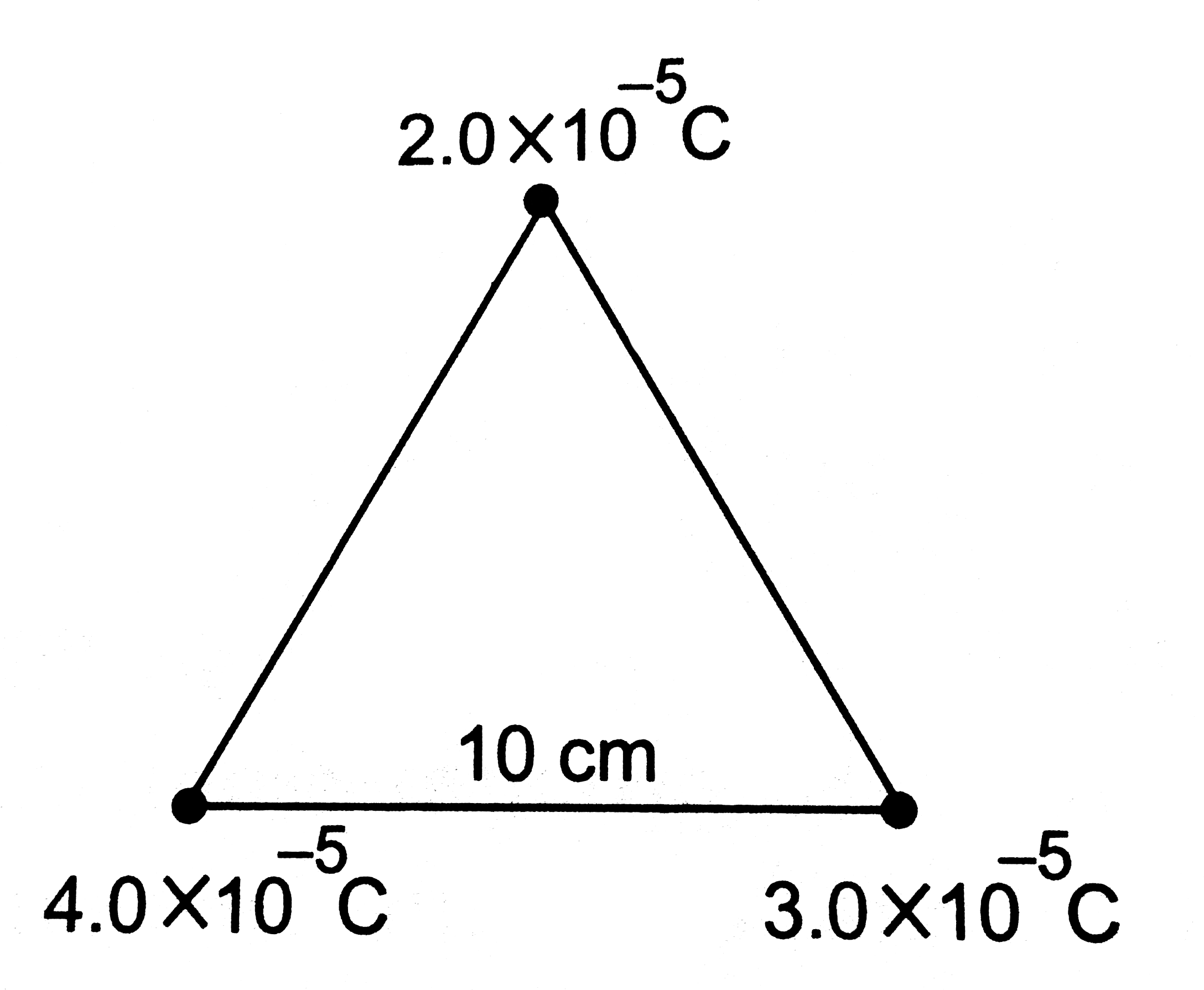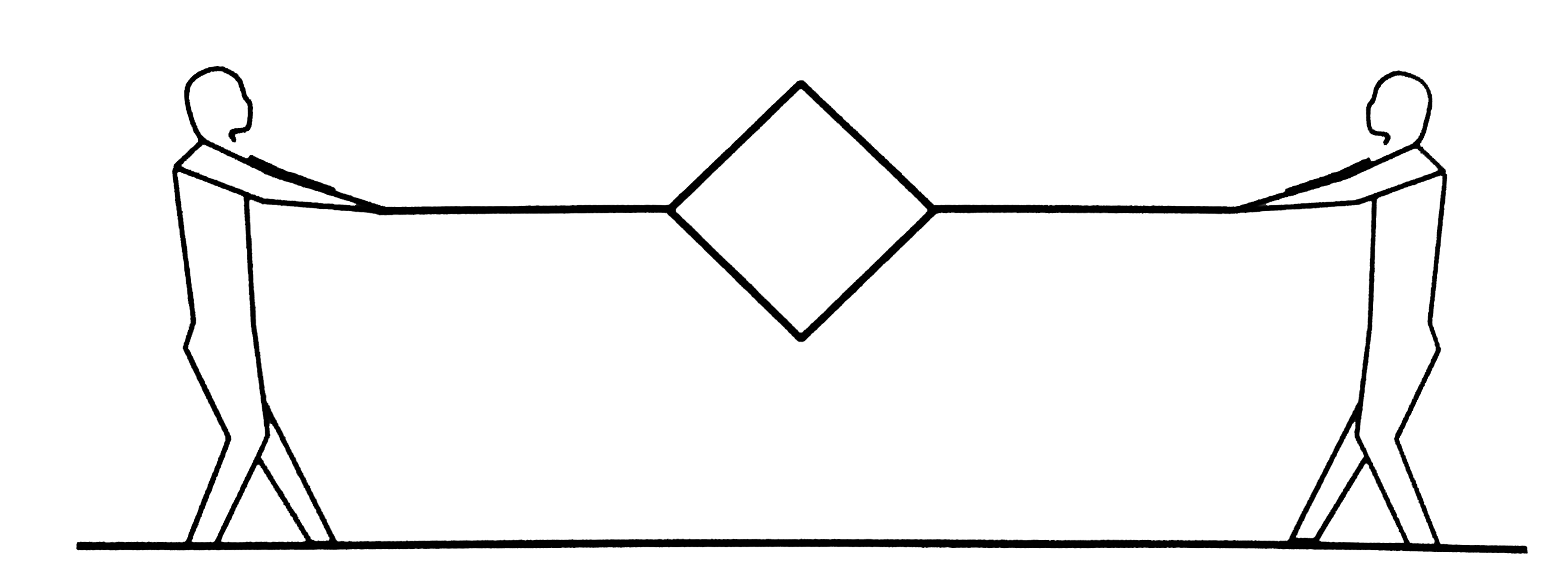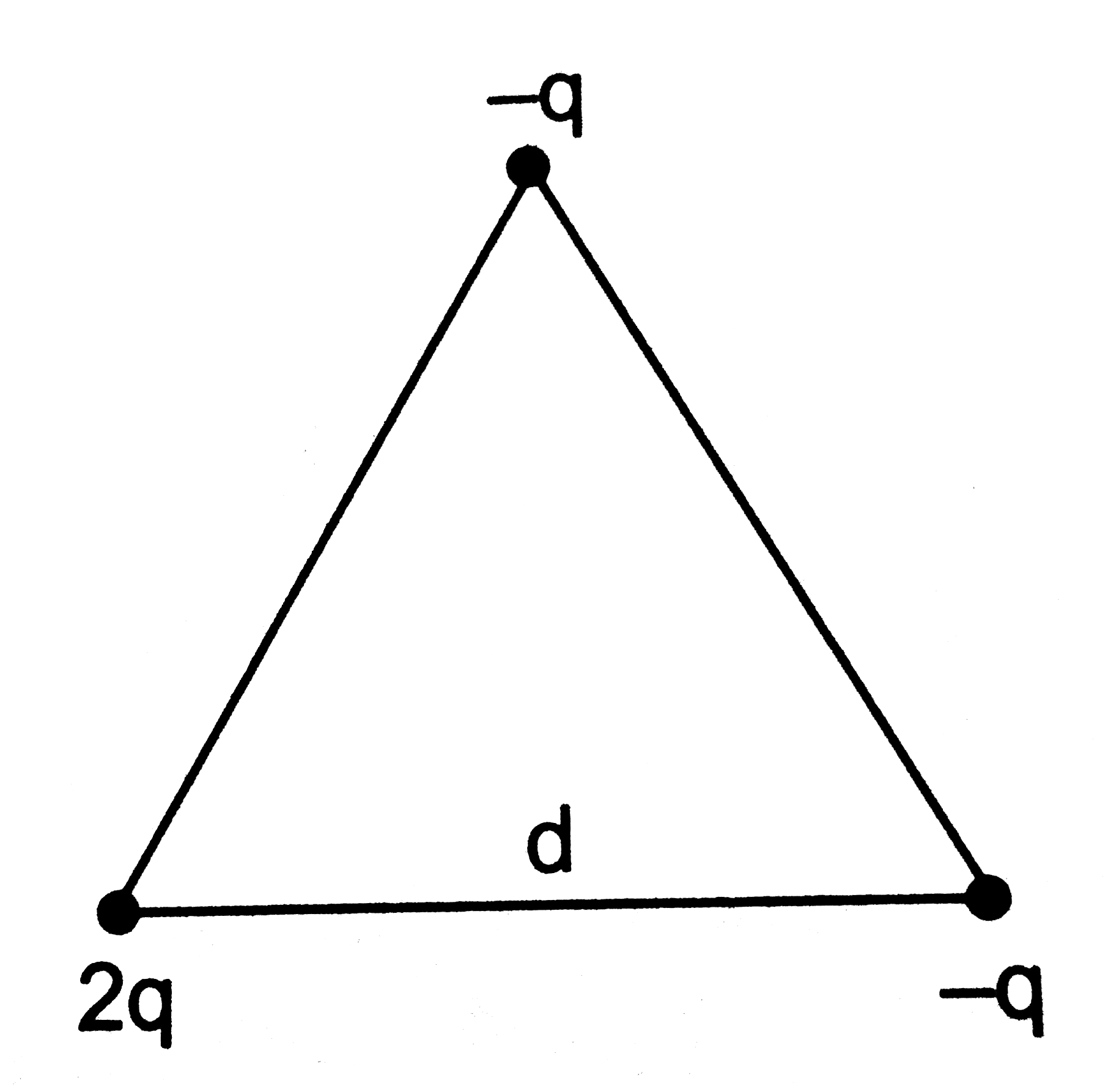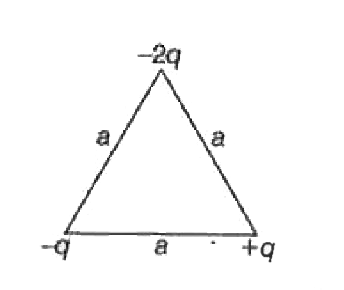How much work has to be done in assembling three charged particles at the vertices of an equilateral triangle as shown in figure
 Solution in Gujrati
Solution in Gujrati
Amount of workdone in assembling the charges is equal to the net potential energy
So,P.E.=V12+V13+V23
=9×10310−1×10−10
[4×2+4×3+3×2]
9×(8+12+6)
9×26=234J
Topper's Solved these Questions
- BOOK - HC VERMACHAPTER - ELECTRIC FIELD AND POTENTIALEXERCISE - Objective 28videos
ELECTRIC FIELD AND POTENTIAL
- BOOK - HC VERMACHAPTER - ELECTRIC CURRENT THROUGH GASESEXERCISE - Exercises23videos
ELECTRIC CURRENT THROUGH GASES
- BOOK - HC VERMACHAPTER - ELECTROMAGNETIC INDUCTIONEXERCISE - EXERCISE9videos
ELECTROMAGNETIC INDUCTION
Similar Questions
Mark out the correct potons.
05:01View SolutionA discharge tube contains helium at a low pressure. A large potential difference is applied across the tube. Consider a helium atom that has just been ionized due to the detachment of an atomic electron. Find the ratio of the distance travelled by the free electron to that by the positive ion in a short time dt after the ionization.
02:00View SolutionShown a metallic square frame of edga a in a vertical plane. A uniform magnetic field B exists in the space in a directon perpendicular to the plane of the figure. Two boys pull the opposite corners of the square ot deform it into a rhombus. They start pulling the corners t t=0 and sisplace the corners at a uniform speed u. (a) find the induced emf in the frame at the instant when the angles at these corners reduce to 60∘. (b) find the induced current in the frame at this instatnt if the total resistance of the frame is R. (c) Find the total charge which flows through a side of the frame by the time the square is deformed into a straight line.
 02:52View Solution
02:52View SolutionHow much work has to be done in assembling three charged particles at the vertices of an equilateral triangle as shown in figure
 07:34View Solution
07:34View SolutionThree charges are arranged on the vertices of an equilateral triangle as shown in figure (29.E6) find the dipole moment of the combination.
 04:02View Solution
04:02View SolutionWork done by an external agent in bringing three particles each of mass m at the vertices of an equilateral triangle of length l is
03:49View SolutionThree particles of equal mass 'm' are situated at the vertices of an equilateral triangle of side L . The work done in increasing the side of the triangle to 2L is
02:37View Solutiona भुजा वाले समबाहु त्रिभुज के तीनों कोनो पर एक- एक कण रखे गए है जिनमें से प्रत्येक का द्रव्यमान m है त्रिभुज की भुजाऍं बढाकर 2a करने के लिए इस निकाय पर कितना कार्य करना होगा।
04:49View Solution10 भुजा वाले समबाहु त्रिभुज के तीनों शीर्षों पर क्रमश: 20μC,30μC तथा 40μC के आवेशित कणों को रखने में कितना कार्य संपादित होगा ?
04:15View SolutionThe work done to assemble the three charges in a configuration as shown in the figure below is
 04:25View Solution
04:25View SolutionThree equal charges Q are at the vertices of an equilateral triangle of side A. How much work is done (by an external agent) in bringing them closer to an equilateral triangle of side A/2?
03:57View SolutionThree equal charge Q are at the vertices of an equilateral triangle of side A. How much work is done (by an external angent ) in bringing them closser to an equilateral triangle of side A/2?
03:06View SolutionTwo similar particles of mass m and charge q are kept on the vertices of an equilateral triangle of side l. Calcualte the work done in moving another particle of charge Q from the third vertex to the centroid of the given triangle.
05:34View Solution100 gm द्रव्यमान के तीन कण अनंत से लेकर किसी समबाहु त्रिभुज के शीर्षों पर रखे जाते है। यदि त्रिभुज की प्रत्येक भुजा 20 cm हो तो किया गया कार्य कितना होगा ?
03:40View SolutionHow much work has to be done in assembling three charged particles at the vertices of an equilateral triangle as shown in figure
 02:58View Solution
02:58View SolutionThe triangles shown in the figure are the coordinates of the equilateral point from the three vertices of AOB.
09:49View Solution

